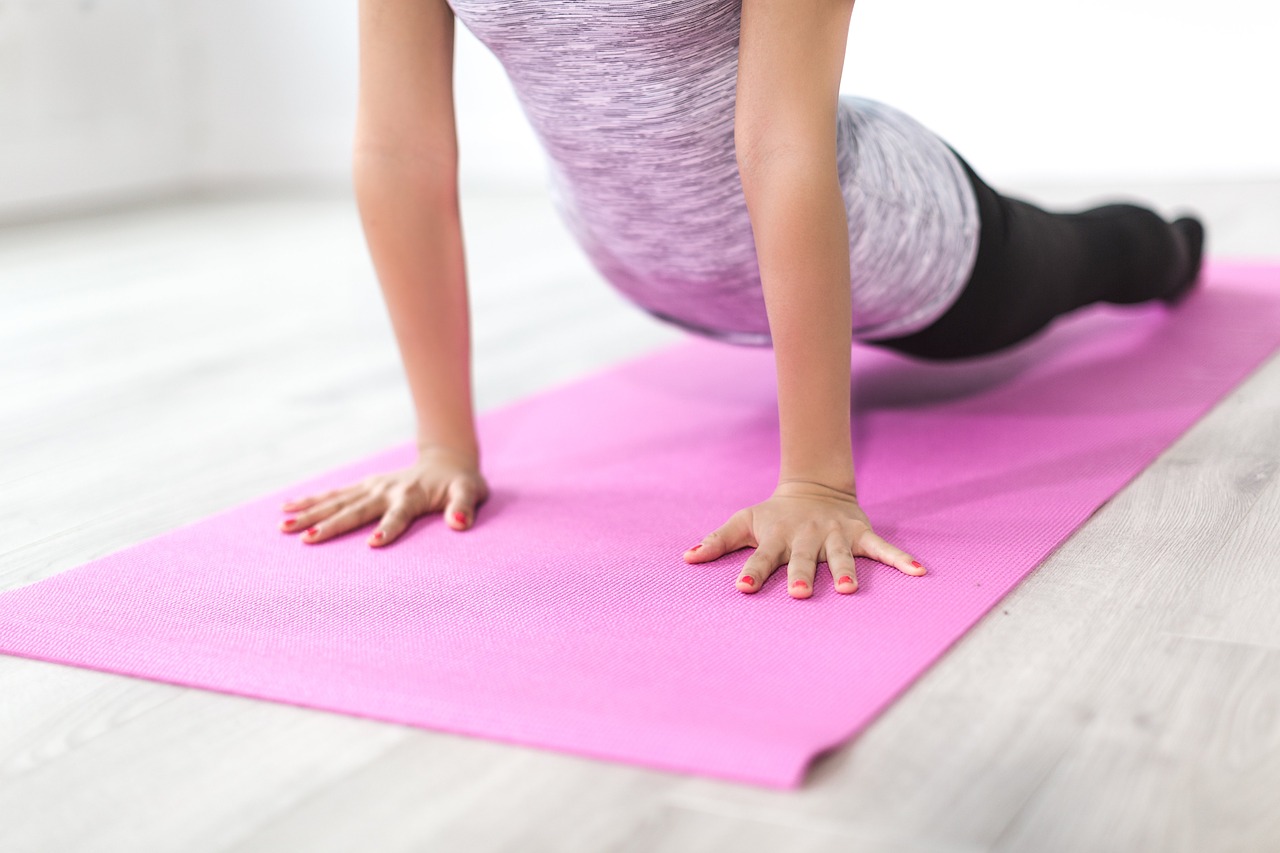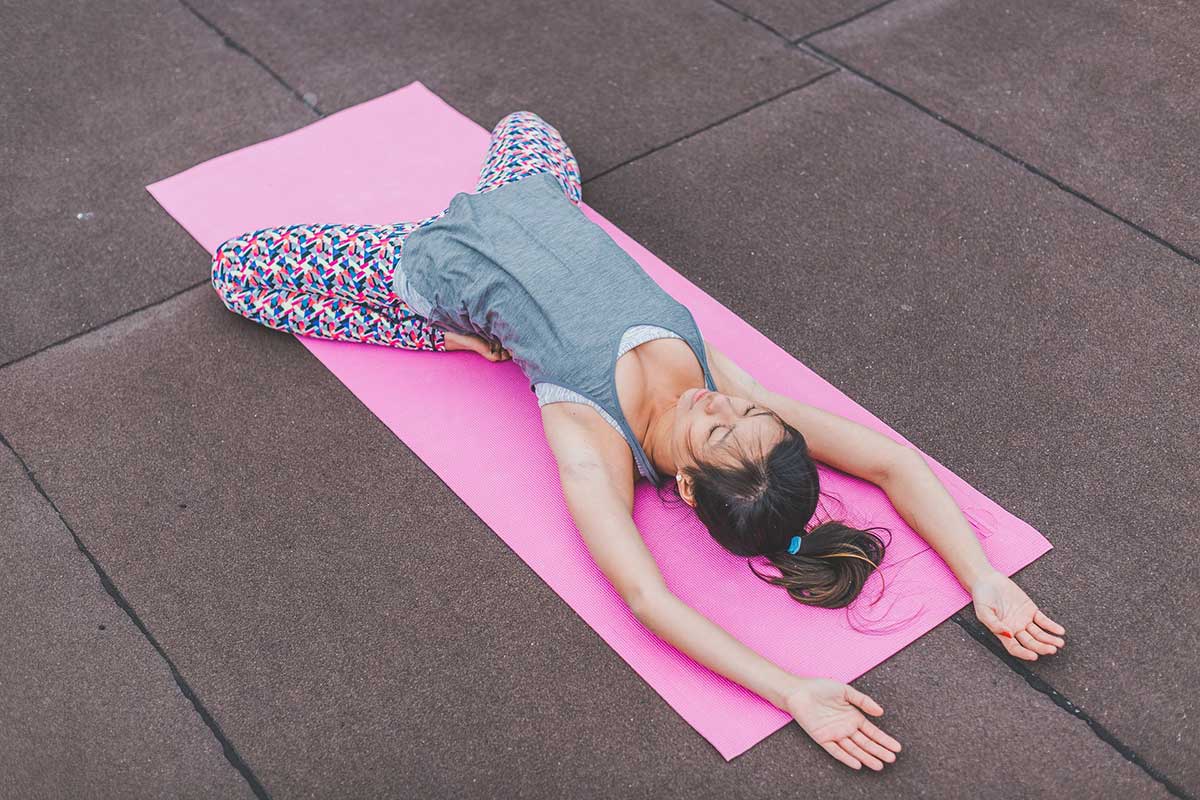How to Choose the Right Yoga Mat
A good yoga mat is essential to a good yoga practice. It’s the only accessory that is mandatory to practice yoga. While many people start their yoga journey with a cheap yoga mat, if yoga is going to be a regular part of your schedule, you’ll want to invest in a high-quality mat that matches your body and your practice. There are so many options out there and it can be daunting when you’re choosing a yoga mat. Not only do you need to consider the needs of your body but also the type of yoga you like to do and where you like to practice. We’ll go over all the attributes to consider when shopping for a new yoga mat.
How to Pick the Right Yoga Mat
There’s a variety of features to consider when shopping for a yoga mat. You should consider what material the mat is made of, the texture and stickiness of the surface, the thickness and size of the mat, as well as the style and price. We go into depth about each of these considerations below.
If you don’t have a ton of experience practicing on different types of mats, I highly recommend seeing if your local studio rents mats for their classes. Some studios will have a variety of mat brands and styles so you can take them for a test drive and see how they suit your practice.
Yoga Mat Material
The material a yoga mat is made from can have a huge effect on the mat, including how it feels, its stickiness, how much cushion it provides, and its weight.
Most yoga mats are made of PVC or vinyl. It’s a cheap material to manufacture and usually provides good stickiness right out of the box. It also has a lot of cushion to it, especially with thicker mats. Many yogis have concerns about PVC though. PVC is not eco-friendly in its manufacturing and there are concerns that PVC yoga mats can release VOCs (volatile oil compounds) and PAHs (polycyclic aromatic hydrocarbons) into the air, which you then breathe into your body. (Learn more about chemicals in yoga mats.)
Many yogis opt for mats made from natural materials. They all have their pros and cons.
Natural or recycled rubber mats are more eco-friendly. They offer good grip, but if you frequently do hot yoga or have sweaty hands they can turn into a slip-and-slide. Closed-cell rubber mats don’t absorb moisture (making them slippier but easier to clean) while an open-celled one will absorb moisture (making them grippier but also harder to clean). Anyone with a latex allergy should avoid rubber mats. Recycled rubber may also contain chemicals and heavy metals that you may not want in contact with your body.
Organic cotton mats are great for absorbing sweat and are easy to clean. However, they don’t have a lot of cushiness or “give” to them. They also don’t offer the “stickiness” of a traditional mat.
Cork mats are very popular for yogis with sweaty hands or fans of hot yoga. They provide a natural sticky grip and easily absorb sweat while being naturally antimicrobial. One downside is they can be less durable than other mat materials and they’re prone to cracking.

Texture and Stickiness
The material will often have a big effect on texture and stickiness, but some of this will come down to the design of the mat. “Stickiness” refers to a mat’s ability to help you stay in your poses without sliding around. If you’re in down dog, both your hands and your feet should feel like they “stick” to the mat helping you maintain the poses. For yogis who practice a lot of hot yoga or have sweaty hands, the mat’s stickiness will be essential to a safe practice.
Rubber and PVC/vinyl mats can have all types of textures depending on the design of the mat. You will rarely see a smooth yoga mat because the texture itself adds to the gripiness of the mat. Beyond that, the texture is just a personal preference based on what feels good to you.
Yoga Mat Thickness
The thickness of your yoga mat can affect your practice in two ways. First, the thickness of the mat will determine how much cushion the mat provides you. If you have sensitive joints you may benefit from a thicker mat that can give you more support. The thickness of the mat can also affect the gripiness of the mat. Super thick mats, like those used for general exercise, are so cushy that it’s difficult to maintain a firm grip or balance which can cause you to slide around in certain positions.
A standard yoga mat is usually 3mm or 1/8″ thick. They can vary in thickness from 1mm up to 6mm for thick mats.
Another way that yoga mat thickness should be considered is how it affects the overall weight of your mat. If you only practice at home, then weight may not matter. But if you like to hit up a yoga class on your way home from work or frequently travel and practice on the go, a lighter mat may suit your lifestyle better. There are many thin yoga mats for travel to consider if you want a lightweight mat.

Yoga Mat Size
A standard yoga mat is usually 24″ wide and commonly either 68″ or 72″ long. While most yogis can get away with any standard-size yoga mat, taller yogis will benefit from longer mats. 72″ long mats are good for yogis with heights between 5’8″ and 6 feet. Anyone taller than that should seek out mats that are 84″ long.
For width, most yogis are fine with 24″ but if you have a wider body or prefer more space there are mats available in 26″, 28″, and 36″.
Style
It may seem shallow, but you’re going to spend a lot of time up close and personal with your mat so you might as well be happy with how it looks! Find your favorite color or a design that you find calming or inspiring. You can even match your mat to your other yoga gear.
Price
With so many yoga mats on the market, there are plenty of options at a variety of price points. If you’re on a tight budget you can usually find an affordable yoga mat in the $20 range. If you want to spend a little more for a higher-quality mat, there are great options in the $60-80 range. If you’re ready to make an investment, there are a lot of high-quality mats from trusted brands for around $100.
If you’re ready to buy a yoga mat, check out some of our buying guides for our favorite yoga mats:
Best Yoga Mats for Sweaty Hands & Feet
